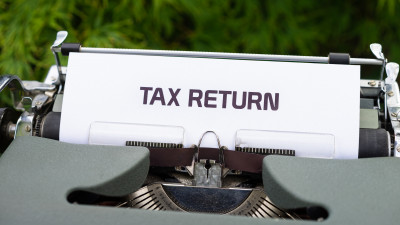Denmark's 2023 plan for fairer rental property taxation
The proposed Danish real estate mark-to-market taxation bill is a game-changing measure that will revolutionize the way capital gains on properties are taxed in Denmark. If passed, this bill will mark a significant shift towards a fairer and more transparent taxation system for real estate investments in the country.

Denmark Takes Steps Towards Fairer Real Estate Taxation with Mark-to-Market Bill: What You Need to Know
The Danish government has recently submitted a bill proposing a mark-to-market regime for real estate taxation, which is expected to bring significant changes to how capital gains on properties are taxed in the country. The proposed measure is aimed at closing a tax loophole that has been utilized by foreign private equity (PE) real estate funds and investment funds for years. This move is not only intended to fund an early retirement pension reform, but also to promote a more transparent and equitable tax system for real estate investments in Denmark.
If enacted, the mark-to-market regime will have a profound impact on how capital gain tax on properties is calculated and paid. This new approach will require property owners to adjust the value of their assets based on current market conditions, which will ultimately result in fairer taxation. Furthermore, the proposed legislation will eliminate the possibility of transferring properties without triggering Danish capital gain tax by way of a disposal of shares in the company that owns the property rather than a disposal of the property.
Overall, this proposal signals a significant step forward in promoting a fair and transparent tax system in the Danish real estate market. The public hearing process will provide stakeholders with the opportunity to offer feedback on this legislation, which will shape the final form of the bill. Keep an eye out for further developments in the coming months as Denmark moves towards enacting this important reform.
You can always find the best investment opportunities on HOUSIFY all over Denmark, in cities such as Copenhagen, Odense, Aarhus,...
Danish Real Estate Mark-to-Market Bill: Detailed Overview and Timeline for Implementation
The Danish government has proposed a significant overhaul of the country's real estate tax system with the introduction of a mark-to-market regime. If the bill is adopted, it will take effect from tax years starting on or after 1st of January 2023.
This bill applies to Danish and foreign entities subject to the corporate income tax rate of 22%, while individuals are exempt. Taxation for transparent structures, such as ownership through K/S's, P/S's, etc., will depend on whether the owner is a company or a person. Foreign investors with direct investments in Danish property, investments via Danish partnerships (K/S, P/S), or indirect investments in Danish propcos (ApS, A/S) would also be affected.
Certain entities exempt from Danish corporate tax are not in scope, and while certain charities and foundations are also not covered by the rules, their subsidiaries are. Overall, this bill will have far-reaching implications for property owners in Denmark, and it is crucial for them to understand how this new taxation regime will affect their portfolios.
Mark-to-Market Taxation: What Rental Property Owners Need to Know
As a rental property owner, you are probably familiar with the tax implications that come with owning and renting out properties. However, there is one type of taxation that you may not have heard of - mark-to-market taxation. This type of taxation can apply to rental properties under certain conditions, and it's important to understand how it works and whether it applies to you.

Mark-to-market taxation applies to rental properties that meet two specific criteria. Firstly, the property must be predominantly rented out at any time during the taxpayer's income year. This means that more than 50% of the property's total floor area or more than 50% of the property's total land area is rented out. Secondly, the market value of properties under Danish taxation, which are rented out to a predominant extent, must exceed DKK 100 million at the end of the taxpayer's income year.
It's important to note that the rental criteria only apply to properties that are already completed and rented out. Properties under development are not included until they are completed and rented out.
So, what does mark-to-market taxation actually mean for rental property owners? Essentially, it means that the value of the property is revalued every year to reflect its current market value. This revaluation is then used to calculate the taxable income for the year. This can result in higher taxes for rental property owners, as the value of the property may increase significantly from year to year.
It's worth noting that mark-to-market taxation only applies to rental properties that meet the criteria outlined above. If your rental property does not meet these criteria, you will continue to be taxed in the traditional way.
In conclusion, mark-to-market taxation is an important consideration for rental property owners in Denmark. If your property meets the criteria outlined above, you may be subject to this type of taxation, which can result in higher taxes. It's important to consult with a tax professional to ensure that you are aware of all of your tax obligations as a rental property owner.
Navigating Mark-to-Market Taxation for Rental Properties: What You Need to Know
If you own a rental property in Denmark, it's important to be aware of mark-to-market taxation. This type of taxation applies to properties that meet certain criteria, including being predominantly rented out and having a market value of over DKK 100 million. However, there are some nuances to this type of taxation that rental property owners should be aware of.
One key point to note is that properties used for the owner's own business, such as domiciles, production facilities, or warehouses, are not subject to mark-to-market taxation. The same goes for intra-group rental properties. For example, a hotel owned and operated by the owner is not subject to this type of taxation, but if an external party leases the hotel, the owner will be subject to mark-to-market taxation.
It's also important to understand when a property is considered rental for the purposes of mark-to-market taxation. A property is only considered rental when a tenant moves in, regardless of any delays in construction. Additionally, the DKK 100 million threshold applies at the group level, and the assessment is made at the end of the income year.
The taxation principle for mark-to-market taxation involves including any increase or decrease in value in the taxable income subject to ordinary corporate income tax. This is set at 22% from 2023 onwards. To determine the taxable income, a realization balance must be calculated for each property entering the mark-to-market taxation scheme. This balance represents the property gain or loss at the time of entering the regime and is reported to the Danish Tax Agency.
It's important to note that future mark-to-market losses must be set off against a positive realization balance, while future gains must be set off against a negative realization balance. If there is only a positive realization balance and value increase, the realization balance will only be triggered if and when the property is disposed of via an asset sale.
In conclusion, mark-to-market taxation is an important consideration for rental property owners in Denmark. Understanding the criteria and nuances of this type of taxation can help rental property owners navigate their tax obligations and ensure compliance with Danish tax laws. It's recommended to seek the advice of a tax professional to fully understand your obligations and minimize your tax liability.
Navigating the Depreciation Rules for Rental Properties in Denmark
- Under mark-to-market taxation, tax depreciation will no longer be available for properties (including buildings and installations)
- Operating equipment may still be eligible for tax depreciation
- Maintenance and improvements on rental properties remain deductible
- Properties in scope must be calculated annually at fair market value
- Investment properties must be recognized at cost price less annual depreciation or fair market value (depending on the accounting principle chosen by the company)
- Fair market value assessment should use recognized valuation methods and document the chosen principle
- Company is responsible for assessing fair market value, but external values can be used to support the assessment
- Accuracy of entry value for mark-to-market taxation is important
- Setting the entry value too low may lead to higher tax payments and draw on liquidity
- Setting the entry value too high will affect the realization balance, which may limit future tax deductions
In summary, as a rental property owner in Denmark, it's vital to understand the implications of mark-to-market taxation on your property's depreciation, valuation, and documentation requirements. By staying informed and working with a trusted tax advisor, you can ensure that your rental property remains a profitable investment.
Don't forget to look for the smartest investment opportunities here on HOUSIFY. Listings of properties in Copenhagen, Odense, Aarhus,...





